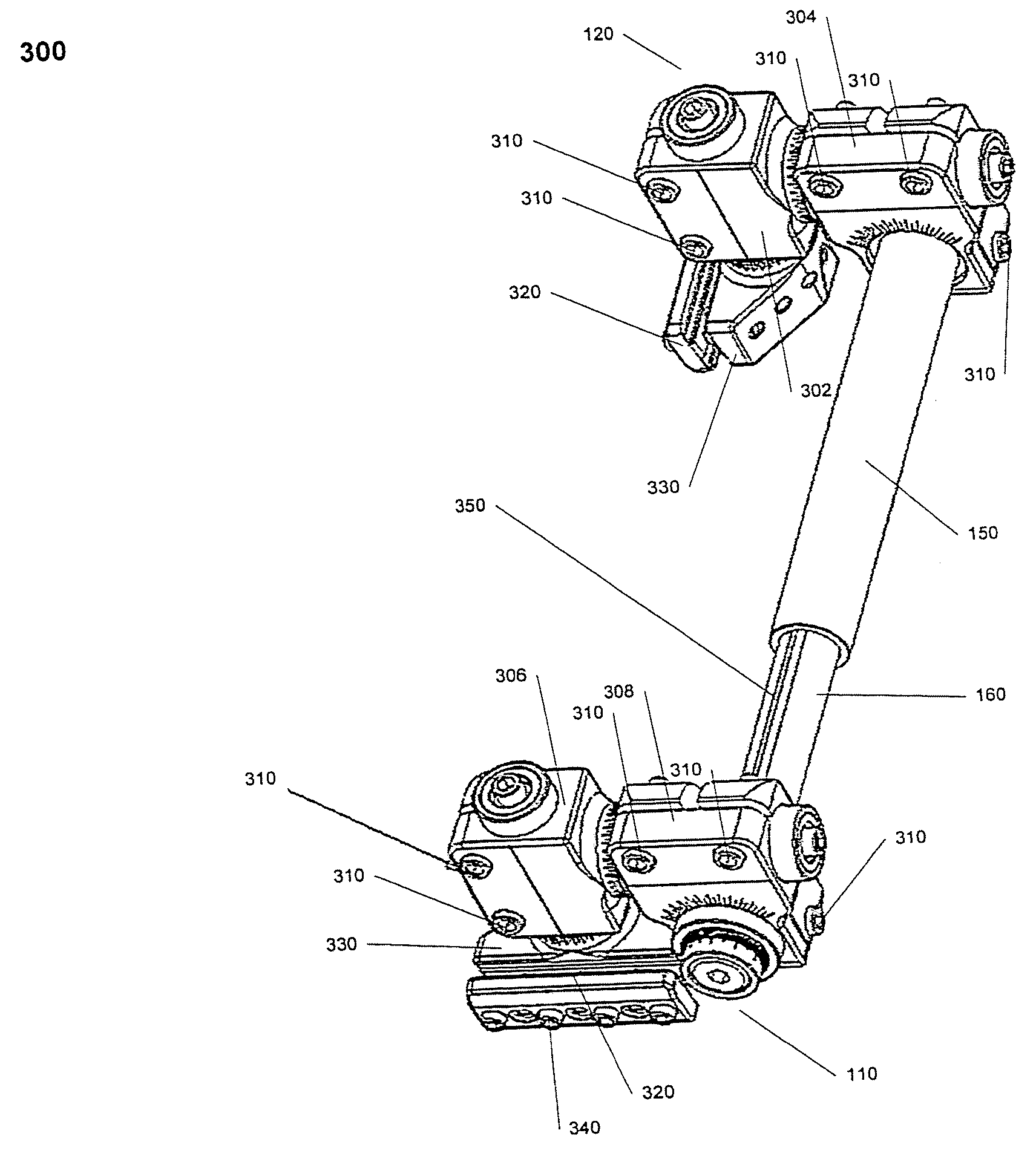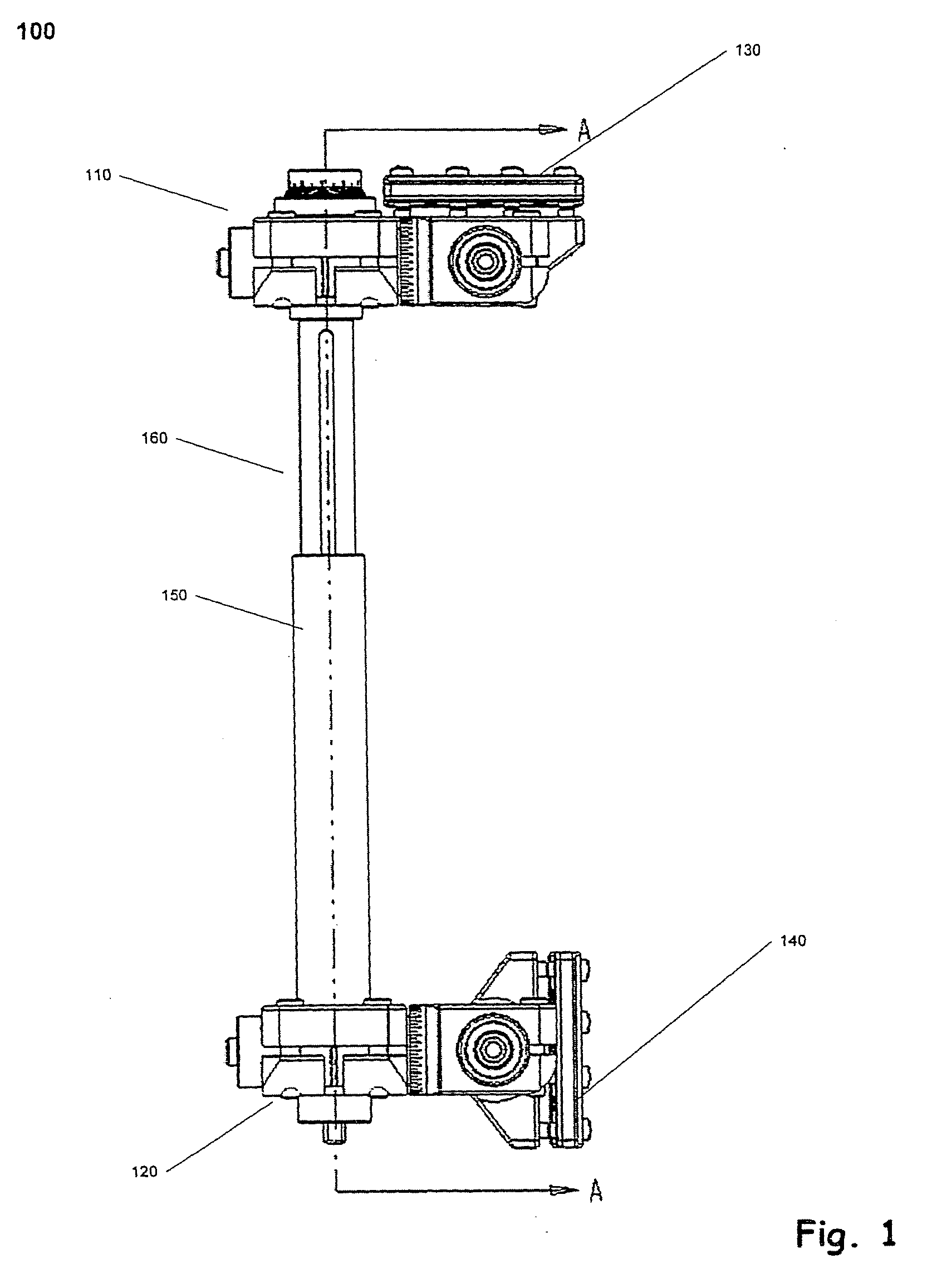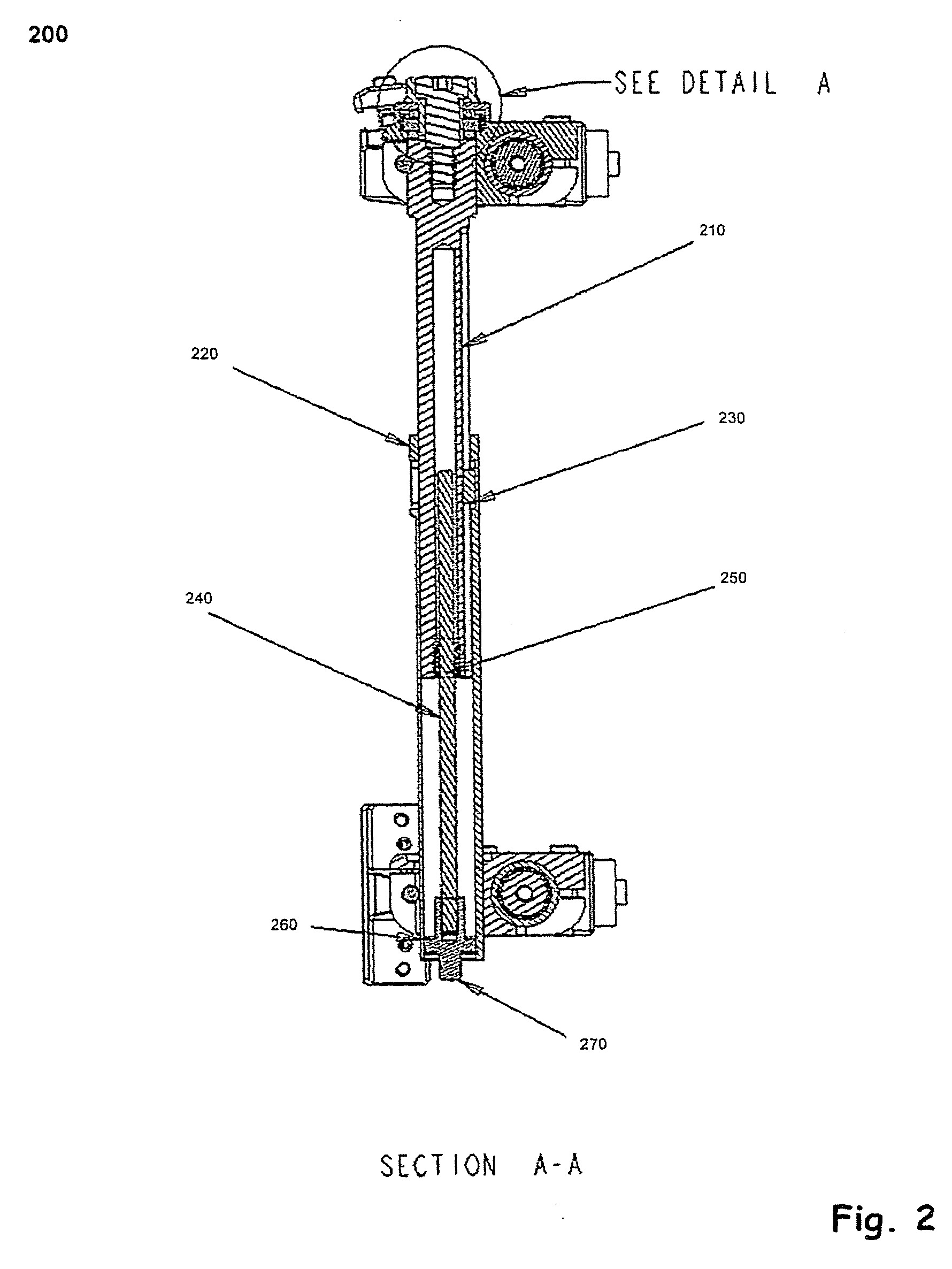Unilateral fixator
a fixator and lateral technology, applied in the field of orthopaedic medicine, can solve the problems of multiple and potentially endless configurations, the device joints must be loosened, and the device as a whole is grossly manipulated,
- Summary
- Abstract
- Description
- Claims
- Application Information
AI Technical Summary
Benefits of technology
Problems solved by technology
Method used
Image
Examples
Embodiment Construction
[0069] The following description is merely exemplary in nature and is not intended to limit the present disclosure, application, or uses. Exemplary embodiments of the present teachings provide a unilateral external fixator device that allows for gross manipulation and fine adjustment of deformities in six degrees of freedom, allowing for a large mechanical advantage and adjustments of the fixator through a deformity correction process without disengaging the device from the patient.
[0070]FIG. 1 provides an image of a unilateral fixator 100 in accordance with an exemplary embodiment of the present teachings. Referring to FIG. 1, the fixator 100 comprises two compound movable joints 110, 120. Attached to each compound movable joint 110, 120 is a pin clamp 130, 140. The pin clamp can accept a variety of pins (not shown), which can be attached to bone fragments undergoing a deformity correction procedure. The compound movable joint 110 is attached to an extension strut 160. The compoun...
PUM
 Login to View More
Login to View More Abstract
Description
Claims
Application Information
 Login to View More
Login to View More - R&D
- Intellectual Property
- Life Sciences
- Materials
- Tech Scout
- Unparalleled Data Quality
- Higher Quality Content
- 60% Fewer Hallucinations
Browse by: Latest US Patents, China's latest patents, Technical Efficacy Thesaurus, Application Domain, Technology Topic, Popular Technical Reports.
© 2025 PatSnap. All rights reserved.Legal|Privacy policy|Modern Slavery Act Transparency Statement|Sitemap|About US| Contact US: help@patsnap.com



